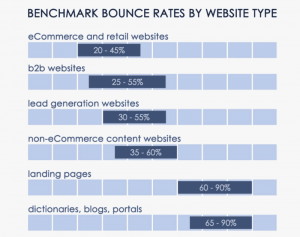
Putting in place an effective ecommerce shipping strategy is one of the most significant things you can do to grow your business online. While many folks start out in ecommerce by taking a simplistic approach to shipping –– like offering free shipping across the board or showing unmodified UPS or USPS rates –– the most successful ecommerce merchants use an ecommerce shipping strategy to differentiate themselves from their competition.
While it can be a powerful point of differentiation, it’s also important to make sure that you as a company can actually act on your strategy. This requires coordination between multiple teams within your company, going all the way from your marketing team to your fulfillment team and several others in between. Establishing an ecommerce shipping strategy lets you ensure that everyone involved in this pipeline knows what’s going on and what their part in the process is.
Assemble the Team

Identifying the right people to help make this decision for your business is the first step in this process. This requires that you bring into the conversation the right stakeholders within your organization.
- Marketing Teams need to communicate shipping to your customers and may want to use shipping promotions like free or flat rate shipping to bring people to your site or increase order value.
- Web Design or Development Teams need to be able to make sure that the right shipping options are being shown to customers at the right time and that these are clear to customers.
- Fulfillment Teams need to be able to ensure that orders are being picked, packed and shipped accurately and on time every time and that no matter what option the customer chooses, their team can handle that choice.
- Customer Service Teams need to know how your approach to shipping will affect customers at each stage in the customer lifecycle so they can answer questions appropriately.
Define Your Goals

Once you’ve identified the key teams in your company who will need to be involved in establishing your strategy, you need to define what you want to accomplish with your ecommerce shipping strategy. There are many areas of focus here including:
- Increase Conversions by offering the kinds of shipping options and rates your customers are expecting. The shipping options and rates you offer can have a massive impact on your conversion rate.
- Increase Average Order Value by offering promotions that encourage folks to buy more. These may include things like free shipping thresholds, free expedited shipping at a certain price point, or flat rate shipping on specific high-profit items.
- Expand Your Market by offering shipping to new areas or to folks who couldn’t previously access your products. Offering international shipping or alternate shipping options like in-store pickup or local delivery can help extend your reach.
- Decrease Your Costs by making changes to your fulfillment process and the shipping services you’re offering. Major carriers like UPS and FedEx offer alternate shipping services like UPS SurePost and FedEx Smart Post that can help cut costs while ensuring a high level of service.
- Improve Operational Efficiency by making sure that your fulfillment teams have the information they need to make better decisions about how to pick, pack and ship orders. This may include things like purchasing new package types, using new services like ShipStation or walking through your fulfillment process to make sure there are no unnecessary manual steps that could be eliminated.
Identify the Options

Once you’ve identified the right team and goals for your business it’s time to get down to the work of choosing a strategy that is going to work for your team to accomplish the goals you’ve set.
We’ll identify a number of available strategies here with the pros and cons for each. None of these are exclusive of one another and most successful business will implement several of these options to form a complete strategy for your unique scenario.
Free Shipping

Free shipping may seem like the simplest strategy and it’s grown massively in popularity since Amazon introduced Free Shipping for orders over $ 25. The advantages of Free Shipping are that it’s easy to explain to customers, it responds to customer expectations and it has a positive effect on conversion rates for customers who make it to your checkout funnel.
Of course, free shipping may be free to your customers –– but not to you. You’ll still need to pay the carrier and you’ll have to make sure you’re making enough on each order to cover the associated shipping costs. This is why you’ll see that most companies (Amazon included) only offer free shipping over a certain price point and only on specific products.
If you choose to offer free shipping, it’s vitally important to understand its impact on your bottom line. Even if you’re making more sales, if you’re losing money on each one it’s of no benefit to your bottom line.
The most effective approach to free shipping is to only offer it for orders where you know you’re making enough on the sale to cover shipping and still make a profit. This means setting a free shipping order subtotal threshold that makes sense for your business and, maybe, excluding products that are too heavy or bulky for you to offer free shipping on.
Flat Rate & Table Rate Shipping

One extremely effective way to avoid some of the challenges of Free Shipping is to go the flat rate or table-rate route. Flat rate shipping is something like $ 10 shipping regardless of order value (see, for example, Overstock.com who charge $ 2.95 to most locations in the United States).
Table-rate shipping is a bit more complex, but doesn’t have to be much more so. Customers in certain regions, like the United Kingdom, prefer table-rate shipping versus being charged a live rate. For example, a merchant with a warehouse in London might charge customers near the city a certain amount, say £5 per order, with rates going up to £10, £15, etc. as you get further away from the fulfillment center.
You might also charge based on the order subtotal ($ 10 for orders up to $ 50 in value, $ 5 for orders up to $ 100, and free for orders over $ 100). Alternately, you might charge a different rate for certain groups of products or set rates based on the order weight.
Live Rates from a Carrier

If the most important factor for you is to offer the best possible rate while still covering your costs, getting live rates in real-time directly from a carrier like UPS, FedEx or DHL may be the best way to go.
While it’s harder to use this approach as a promotional tool (the rates may vary significantly depending on what the customer orders and the distance from your warehouses to the customer), you can ensure that you’re offering the cheapest possible shipping option by charging your customer exactly what you’ll be charged by the carrier.
Especially if you’re in a market where many of your competitors are offering live rates, it may be important to do so. This means that for lightweight orders or customers located near your warehouses, you can often offer significantly cheaper shipping than your competition while still making sure your costs are covered.
Of course, it doesn’t have to be as simple as plugging into a carrier like UPS and showing exactly what UPS returns for each order. You can add a surcharge if you want the shipping charge to cover things like packaging and your cost of fulfillment. You can also discount the rate returned to be that much more competitive over others in your market.
Mixed & Alternate Options

While these three options are the most popular and frequently used, thinking outside the box and mixing and matching these approaches can be extremely effective. This allows you to balance your revenue needs with promotional opportunities.
For example, offering free standard shipping (with no delivery commitment or a range commitment like 5-10 business days for delivery) alongside other options like Expedited shipping (for example, 3-5 day delivery at a table rate based on order value) and live rate options for Second Day and Overnight delivery.
In addition to these most popular approaches, offering additional, less orthodox options can help you stand out from the crowd. For example, free in-store pickup can drive customers to your retail locations (resulting in additional traffic and sales at your brick and mortar locations). If you’re selling particularly large or heavy items, offering LTL freight delivery on your website can help keep costs down while making it easier for customers to place larger orders online.
Making the Leap: Implementation & Analysis

With the right team in place, your goals clearly defined, and your approach or approaches chosen, it’s time to implement your ecommerce shipping strategy. Each team member or team leader should be clear on their responsibilities. You don’t have to do everything all at once but everyone should be clear on their responsibilities each step of the way.
Your marketing team should be ready to communicate your new approach to your customers and potential customers, the web design or development team should get your site set up to offer these new options, your fulfillment team should be ready to make use of your new options and know how to handle each option the customer chooses, and your customer service team should be educated in the benefits of each option you’re now going to be offering your customers.
Once your new approach is live, make it the responsibility of each team to report on how well things are going for them. Often, a new approach will take some time to bed down so if you have the evidence to back up your changes be prepared to stick with it and make some adjustments as you go.
The Shipping Strategy That’s Right for You

Making changes to your ecommerce shipping strategy can help ensure your business’ success by improving your conversion rate, increasing your average order value, and increasing sales of more profitable products, all while making sure that you’re aware of exactly how much you’re going to be making (if you want to pad your profits) or losing (if you’re prepared to give away some revenue to be more competitive) on shipping.
If you truly want to run a successful online business it’ll be worth your while to invest some time into determining and executing a purposeful ecommerce shipping strategy.
Digital & Social Articles on Business 2 Community(18)
Report Post









